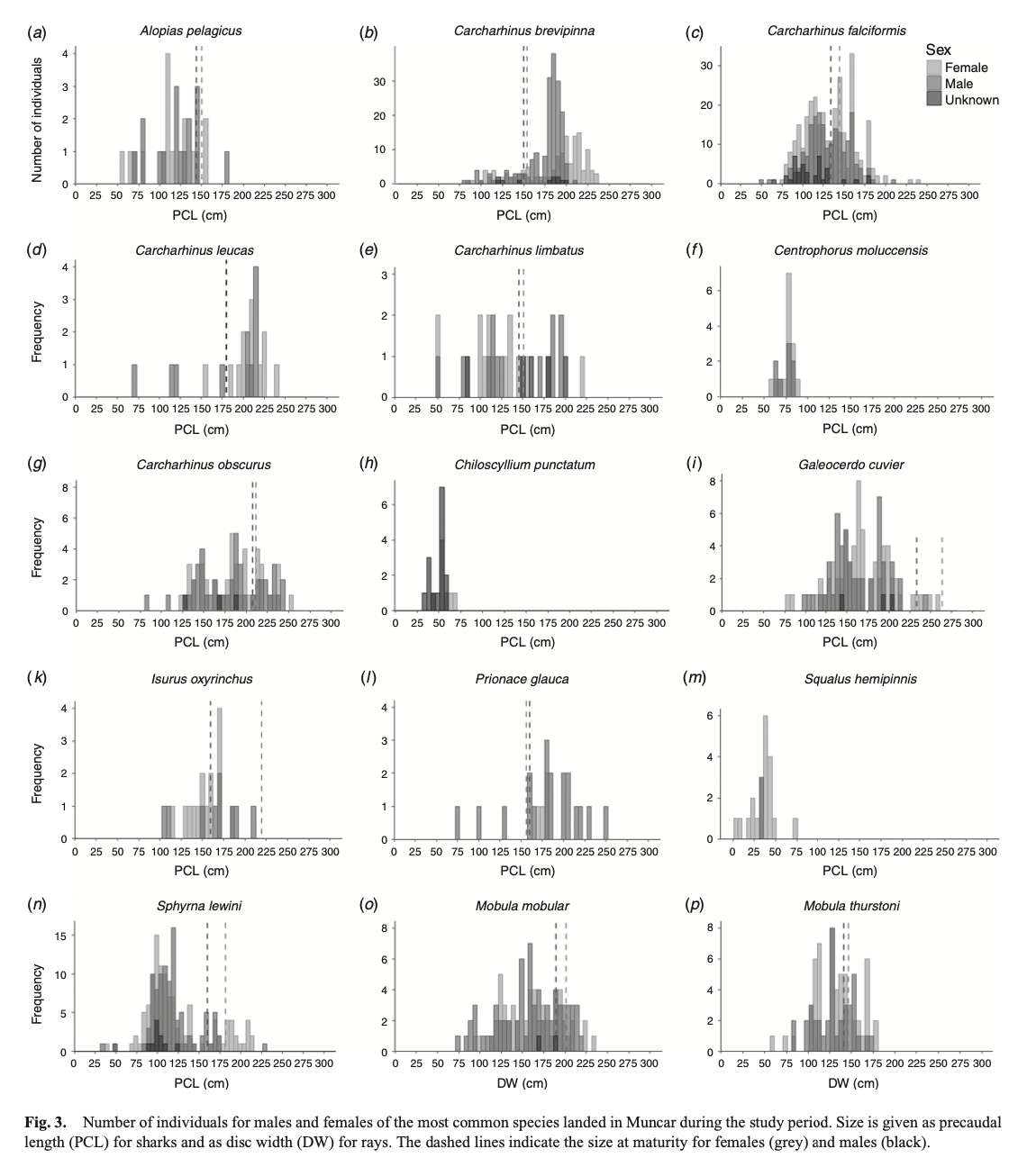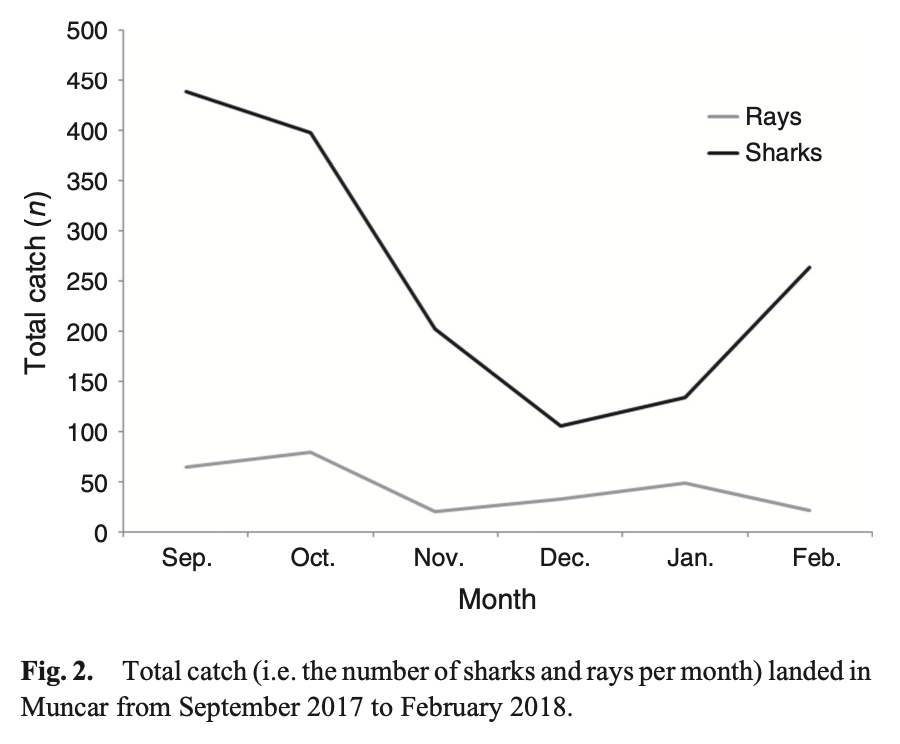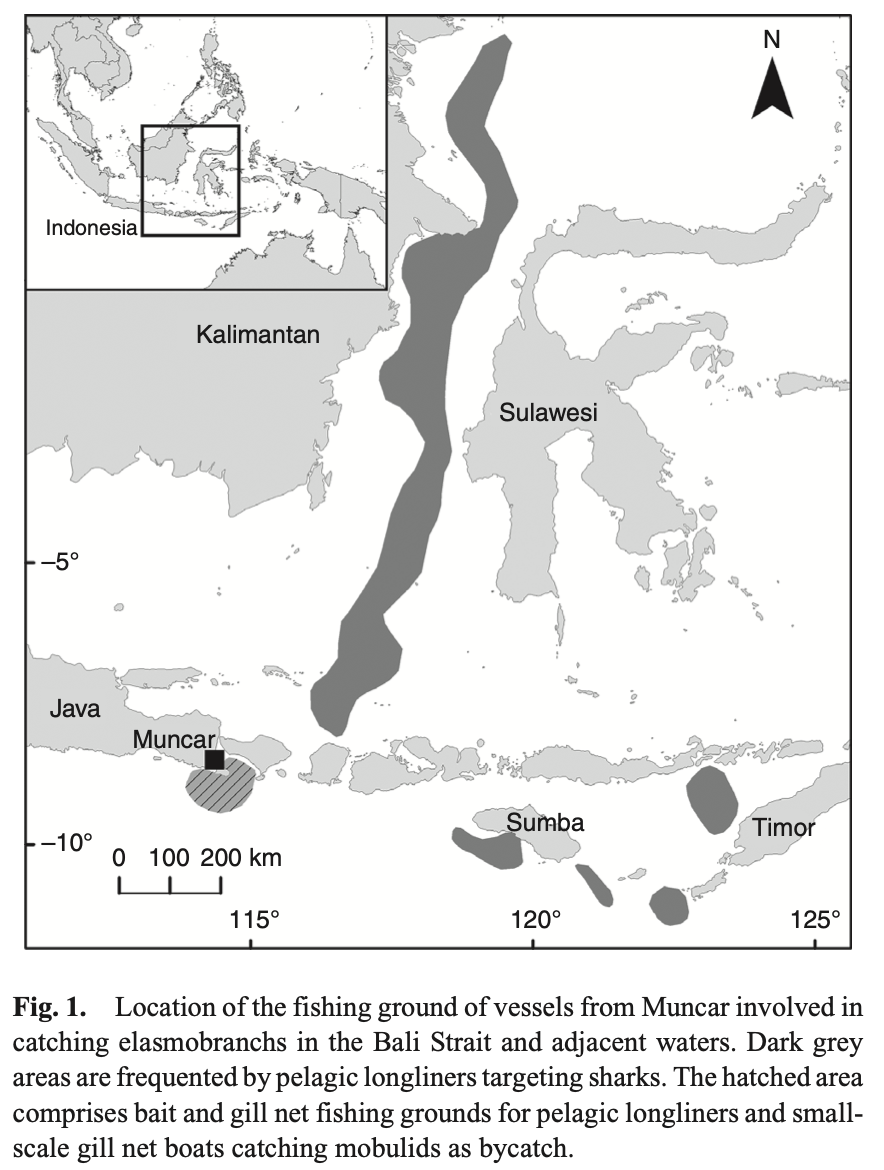Immature individuals dominate elasmobranch fisheries of the Bali Strait
March 2020
Sara Tabea Winter, Fahmi, Didik Rudianto, Betty J. L. Laglbauer C, Isabel Ender & Colin A. Simpfendorfer
Keywords: Indonesia • Longline Fisheries • Management Challenges • Ray • Shark • Small-scale Fisheries



Summary: Elasmobranchs are important for marine ecosystems but overfishing is threatening their populations worldwide. Indonesia is the leading elasmobranch fishing nation but lacks data on their fisheries at a species level. This study examined elasmobranch fisheries in Bali Strait and found 53 species, many of which are at conservation risk. Immature individuals dominated the catch and vulnerability varied across sex and size of each species. Improved management is needed in Indonesia and further research is recommended to develop efficient and locally adapted strategies.
Abstract
“Elasmobranchs play an important role in the functioning of marine ecosystems and top-down control in food webs. However, overexploitation threatens elasmobranch populations worldwide. Indonesia is currently the leading elasmobranch fishing nation, yet elasmobranch management in Indonesia is challenging because of the paucity of data on elasmobranch fisheries, especially at a species level. This study examined the elasmobranch fisheries of the Bali Strait by describing the species, sex and size composition of the elasmobranch catch landed at a major port in Eastern Java, Indonesia. Data were collected between August 2017 and March 2018 in Muncar. Elasmobranchs were identified to species level and sexed. The disc width and length of 301 rays and the precaudal length and fork length of 1657 sharks were measured. In all, 53 species were identified, many of which are at conservation risk, including species with national and international protection. Vulnerability to fishing gear varied across sex and size of each species, with immature individuals dominating the catch of most species. The findings emphasise the need for improved management of elasmobranchs in Indonesia and could help identify priorities or form strategies. Additional regional and fisheries-specific research is recommended to develop efficient and locally adapted management strategies.”
Author Affiliations
College of Science and Engineering, James Cook University
Research Centre for Oceanography, LIPI (Indonesian Institute of Sciences)
Manta Trust
University of the Azores
School of Biomedical Science, The University of Queensland
Centre for Sustainable Tropical Fisheries and Aquaculture, James Cook University
Funded by
Shark Conservation Fund
Mobula Project Indonesia

